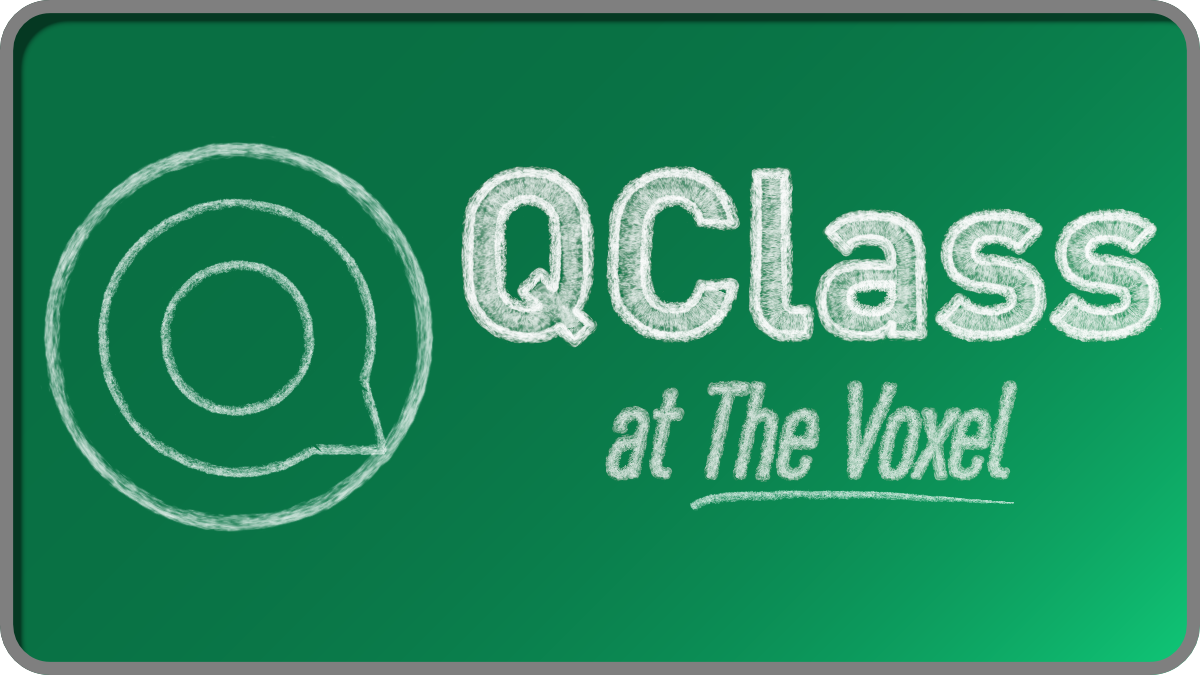Attend a QClass
Our class, called the QClass, is a three-day deep dive into all the areas of QLab: audio, video, lighting, show control, scripting, networking, and collaboration. The class is suitable for beginners, seasoned QLab experts, and everyone in between.
We host classes open to the public several times per year in various places, including two at our home theater in Baltimore, The Voxel. Classes will be listed here as they are scheduled, along with links to sign up.
Subscribe to QClass Notifications
Join our mailing list to find out where and when upcoming classes are scheduled.
Upcoming QClasses
The Voxel

QClass at The Voxel
We are hosting a three-day, in-person class all about QLab 5 this January 7th - 9th at our theater and research venue, The Voxel, in Baltimore, MD.
Taught by Figure 53’s Sam Kusnetz, the class is your opportunity to make a thorough and deep exploration into all of QLab's features, get hands-on experience, ask questions, and hang out with other QLab users and Figure 53 staff.
Registration is first-come, first-served and attendance is capped.
- When: 9:00am - 5:00pm on January 7th, 8th, and 9th.
- Where: The Voxel - our beautiful theater, located at 9 West 25th Street in Baltimore, MD.
- Who is this for: This class is for anyone with a basic working knowledge of QLab. As long as you can set up a workspace and use simple cues, this class is for you - from advanced beginners to seasoned pros.
- Cost: $300. Please contact us at qclass@figure53.com if you would like to attend, but the admission fee is a financial hardship for you.
- This class will not be live-streamed; the only way to attend is in person.
- For the best experience, please bring your own Mac laptop capable of running QLab 5. A two-week demo license will be provided to give you full access to QLab's features.
Watch the recordings of the September 2025 QClass at the Voxel

Day 1 - Welcome To QLab, Audio, Object Audio
A tour of the QLab interface, including all the elements of the main workspace window, the Basics tab of the inspector, the sidebar, the toolbar, and the toolbox; a tour of the audio capabilities of QLab including the Audio cue, slicing and devamping, rate and pitch, audio effects, fading audio, audio settings, and the Mic cue; and a tour of QLab 5.5's new object audio system.

Day 2 - Object Audio continued, Show Control, Video, and Hardware
The Triggers tab of the inspector; sending and receiving MIDI, MSC, MTC, LTC, and OSC; Network cues and QLab's OSC dictionary; a tour of Video including Video cues, video effects, blend modes, video settings, the video stage editor, multi-projector outputs and edge blending, video file formats, the Camera cue, and Text cues; and some discussion about hardware choices including "which Mac should I use."

Day 3 - Lighting, Collaboration, Workflow Tools, Scripting, and assorted topics
Lighting in QLab; Collaboration; Workflow tools including find, batch edit, load to time, paste cue properties, record cue sequence, the Workspace Status window, media logging, secondary windows, cue templates and workspace templates, settings import and export, the launcher window, and file management; auditioning cues; scripting in QLab; odds and ends; closing remarks.
Watch the recordings of the September 2023 QClass at the Voxel

Day 1 - Welcome To QLab and Audio
A tour of the QLab interface, including all the elements of the main workspace window, the Basics tab of the inspector, the sidebar, the toolbar, and the toolbox; and a tour of the audio capabilities of QLab including the Audio cue, slicing and devamping, rate and pitch, audio effects, fading audio, audio settings, and the Mic cue. At the end of the class we also talked about Group cues and did some miscellaneous Q & A.

Day 2 - Show Control and Video
The Triggers tab of the inspector; sending and receiving MIDI, MSC, MTC, LTC, and OSC; Network cues and QLab's OSC dictionary; a tour of Video including Video cues, video effects, blend modes, video settings, the video stage editor, multi-projector outputs and edge blending, video file formats, the Camera cue, and Text cues. We end the day with general Q & A.

Day 3 - Lighting, Hardware, Workflow Tools, and Collaboration
Lighting in QLab; Hardware requirements and recommendations; Workflow tools including find, batch edit, load to time, paste cue properties, record cue sequence, the Workspace Status window, media logging, secondary windows, cue templates and workspace templates, settings import and export, the launcher window, and file management; auditioning cues; collaboration; scripting in QLab; system redundancy; closing remarks.
Want to host your own QClass?
If you represent a group of ten or more people interested in hosting a dedicated class, we are able to bring the QClass to your venue on a limited basis. The fee for this class is $5000, plus the cost of travel and lodging for our teacher or teachers.
Contact us to find out more.